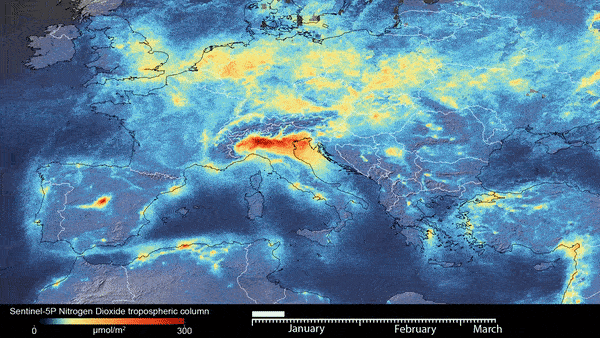
Metal Culture ran their August 2020 Future Network Shorts event in collaboration with Season For Change to give artists and technologists a platform to explore climate change.
E2 used this to demo a land survey of Rome using available resources.
Rome Land Survey 2020
This sonification made in MAX MSP cycles through tables of air pollution data collected in Rome during March and April 2020 during COVID-19 lockdown.
24 hours of traffic in Rome 2018 - source http://urbangeobigdata.como.polimi.it/
Land use Rome 1970 -2014 - source http://urbangeobigdata.como.polimi.it/
Sensor locations from our COVID lockdown data sonification - source Google Earth
What is a socio-ecological system?
Social-ecological systems refer to the interdependence and interconnection of social and ecological entities that exist in continuous space across the surface of the Earth. Sentience implies entities which have the quality of perception and response to their subjective state.
Over lockdown my practice focussed on starting the platform e2 (ecosystem 2) in collaboration with several artists, scientists and programmers to explore the relationship between cultural awareness and the subjective act of sensing the climate breakdown. This work takes place in gallery spaces but more frequently in classrooms and community spaces.
Over several years e2’s practice has evolved from designing urban farms to working with mediums such as IoT sensors, programming, data visualisation and digital manufacturing to create some form of emotive or perceptual encounter with the climate breakdown that engenders a conversation around intervention.
Sensing can occur through our own perceptions and can also be mediated through technologies such as sensors and satellites that offer us a way to gather and present different perspectives of how our environments affect the 15km of breathable atmosphere in motion above them.
Perspective plays a big part in this process as we try to look at the relationships between the view from above presented by satellite and aerial imagery and the relationships to our surroundings provided by our bodily senses, our knowledge as agents in diverse environments, bottom up politics and through technologies such as environmental sensors.
By making sensing experiences and conversations about action more widely available we hope that we can be a part of giving a fairer share of power to those who are most affected by the climate crisis - young people, climate refugees and those already living in socio-ecological breakdown - whilst providing opportunities for activists and practitioners of all backgrounds to share their experiences of intervention through mitigation and adaptation.
NO2 emissions in troposphere during initial COVID-19 outbreaks in January - March 2020
The recent images taken by the Aura (NASA) and Sentinel-5 (ESA) satellites, which have shown falling nitrogen dioxide levels in the Troposphere over major cities during the pandemic have shown what is possible if we mitigate our effect on the atmosphere.
Social-ecologies that develop in the next decade must work towards some shared idea of ‘signal’ - the idea that we are moving towards a course of action that is reacting to climate and cultural injustices. If this issue stems from the dynamic between land-based cultures, the atmosphere in motion above them and solar energy from space then how do we intervene and change it?
Art, science and learning activities can present different aspects of experience and conversation based on listening to a wider set of human and non-human voices in social-ecological space, in turn providing chances to explore the cosmologies that could result. Gathering data from sensors and satellites, producing spatial interventions and finding ways to interact with sense data outside of purely curriculum-based settings might help knowledge find its way out of traditional spheres of influence and into the new and more lateral networks of community-based agencies that are needed.
Satellite imagery over Southern Europe and North Africa from 1984-2018 - source Google Earth





